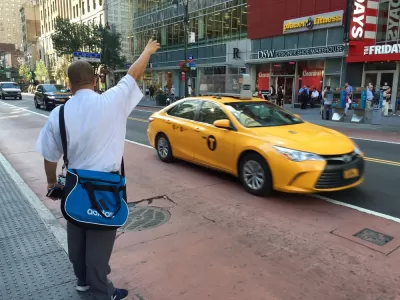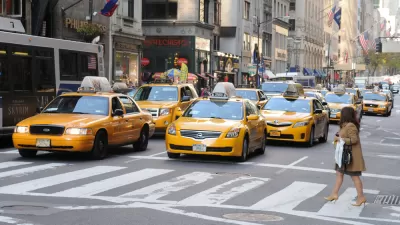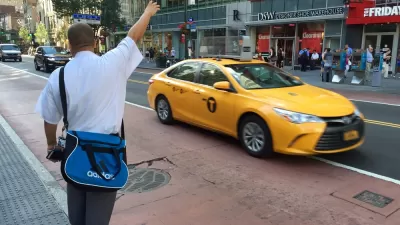Many low- and moderate-income Americans use ride-hailing services to reach essential destinations, but few find the services affordable.

A new study published in the Journal of the American Planning Association (JAPA) reveals the distinct ways that low- and moderate-income households use ride-hailing services. Megan McGlinchey summarizes the study’s results in the Uncovering JAPA blog.
“[The study] found that a higher proportion of their respondents had used ride-hail at least once compared to rates from less targeted studies. Usage was reportedly even more frequent among members of households without a car, reinforcing the notion that ride-hail meets different needs for lower-income and no-car households that may be obscured by general trends.” People without access to cars found ride-hail more important for filling gaps in the existing mobility system.
“Although only 36 percent of zero-car respondents deemed ride-hail to be affordable, they were nonetheless more likely to rely on it for practical trips such as attending medical appointments or grocery shopping.” This signals a need for more affordable ride-hailing services, particularly as “Three-quarters of zero-car respondents cited cost as the main reason that they did not use ride hail more often (compared to 52 percent of respondents with cars).”
The study concludes that the benefits of new mobility modes are distributed unevenly across demographics, and disaggregating data to understand these trends is important to achieving equitable service. “Ride-hail services can be seen as one tool within a city's broader mobility ecosystem, and targeted actions like subsidies can help ensure that this transit method reaches people who would benefit most from it.”
FULL STORY: Expanding the Benefits of Ride-Hail to Lower-Income Households

Alabama: Trump Terminates Settlements for Black Communities Harmed By Raw Sewage
Trump deemed the landmark civil rights agreement “illegal DEI and environmental justice policy.”

Planetizen Federal Action Tracker
A weekly monitor of how Trump’s orders and actions are impacting planners and planning in America.

The 120 Year Old Tiny Home Villages That Sheltered San Francisco’s Earthquake Refugees
More than a century ago, San Francisco mobilized to house thousands of residents displaced by the 1906 earthquake. Could their strategy offer a model for the present?

In Both Crashes and Crime, Public Transportation is Far Safer than Driving
Contrary to popular assumptions, public transportation has far lower crash and crime rates than automobile travel. For safer communities, improve and encourage transit travel.

Report: Zoning Reforms Should Complement Nashville’s Ambitious Transit Plan
Without reform, restrictive zoning codes will limit the impact of the city’s planned transit expansion and could exclude some of the residents who depend on transit the most.

Judge Orders Release of Frozen IRA, IIJA Funding
The decision is a victory for environmental groups who charged that freezing funds for critical infrastructure and disaster response programs caused “real and irreparable harm” to communities.
Urban Design for Planners 1: Software Tools
This six-course series explores essential urban design concepts using open source software and equips planners with the tools they need to participate fully in the urban design process.
Planning for Universal Design
Learn the tools for implementing Universal Design in planning regulations.
Clanton & Associates, Inc.
Jessamine County Fiscal Court
Institute for Housing and Urban Development Studies (IHS)
City of Grandview
Harvard GSD Executive Education
Toledo-Lucas County Plan Commissions
Salt Lake City
NYU Wagner Graduate School of Public Service





























